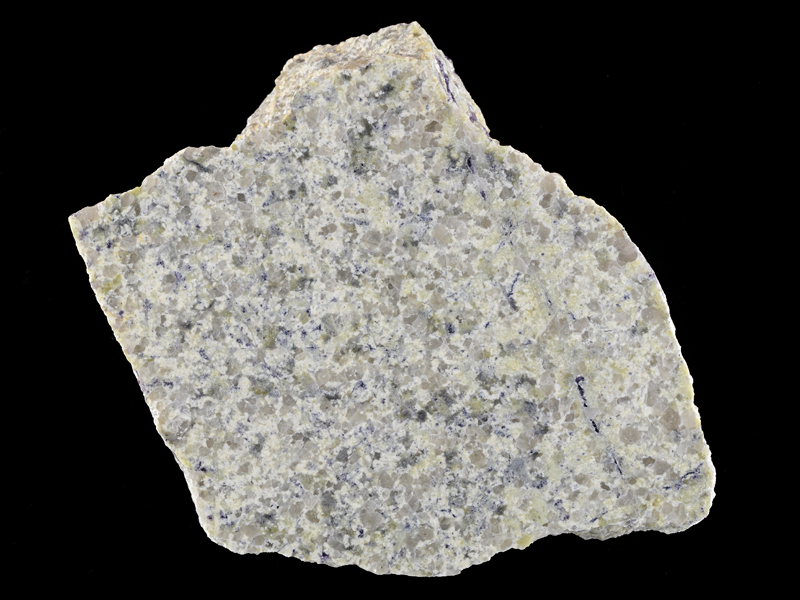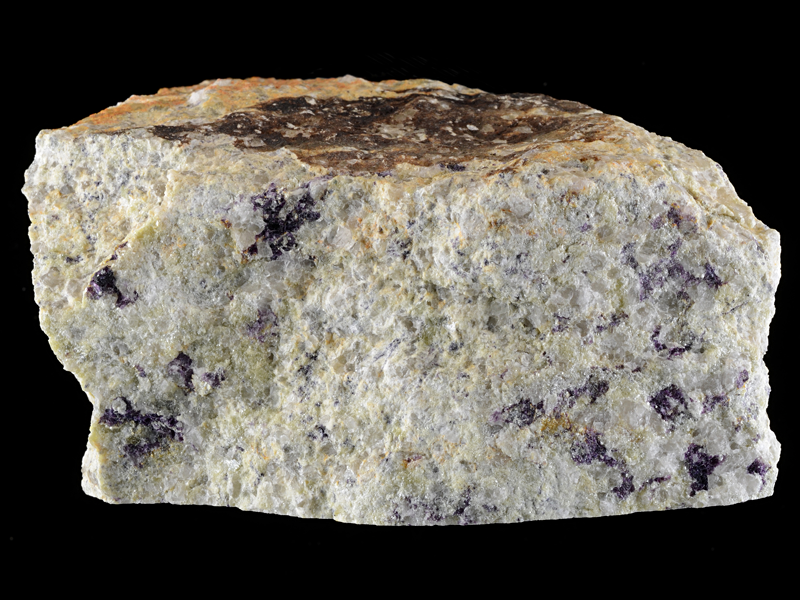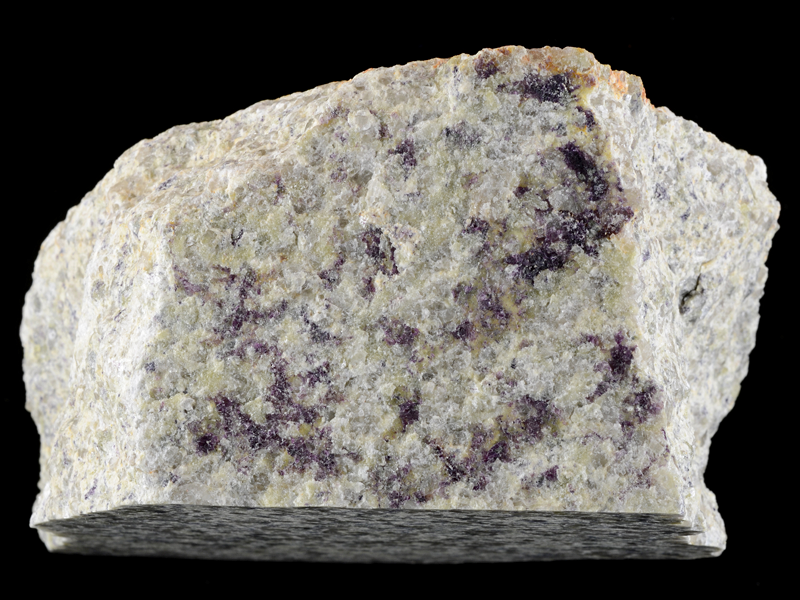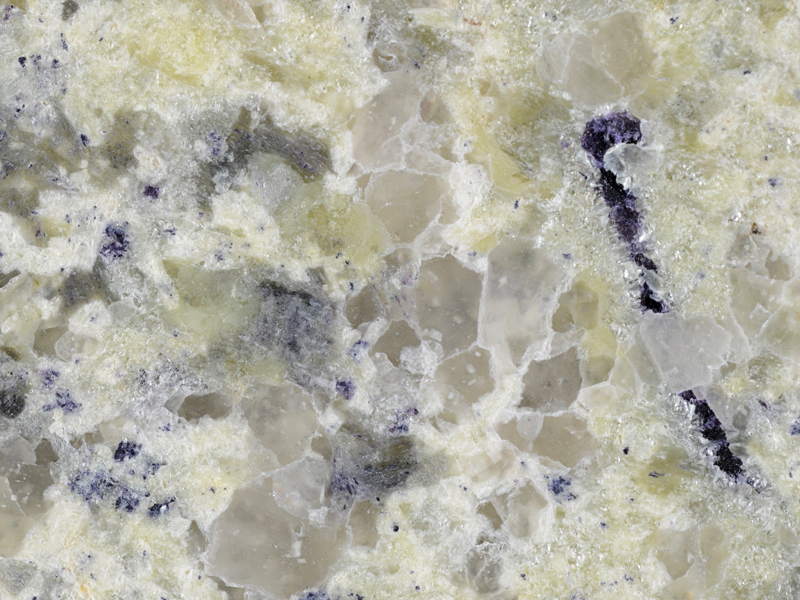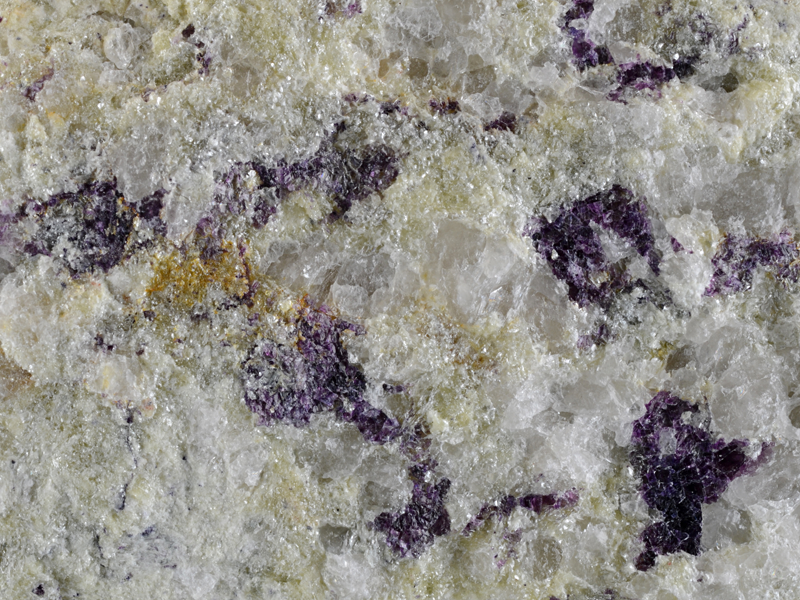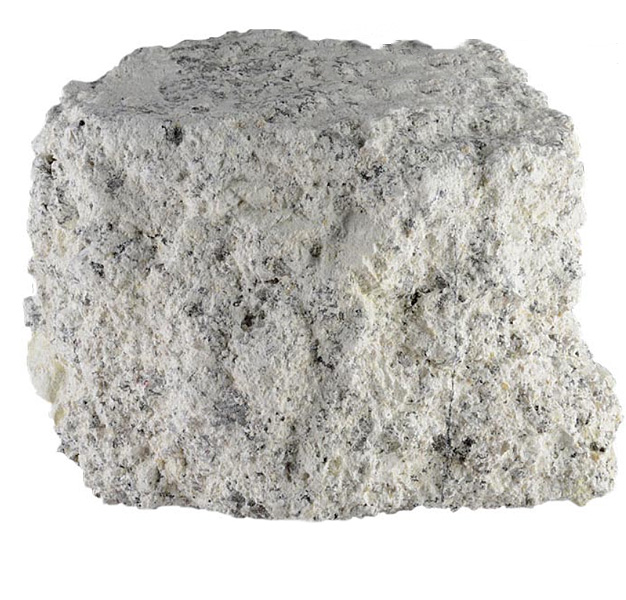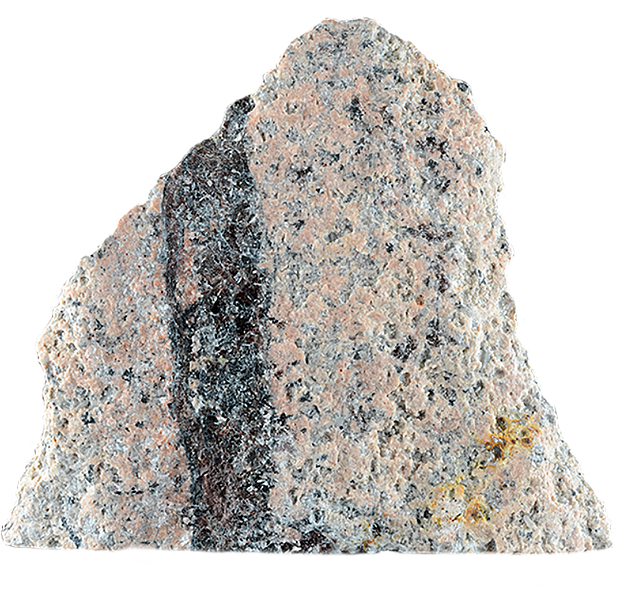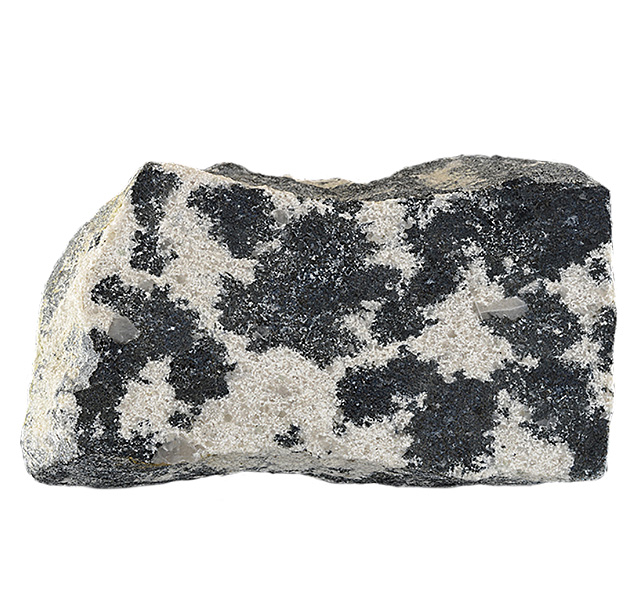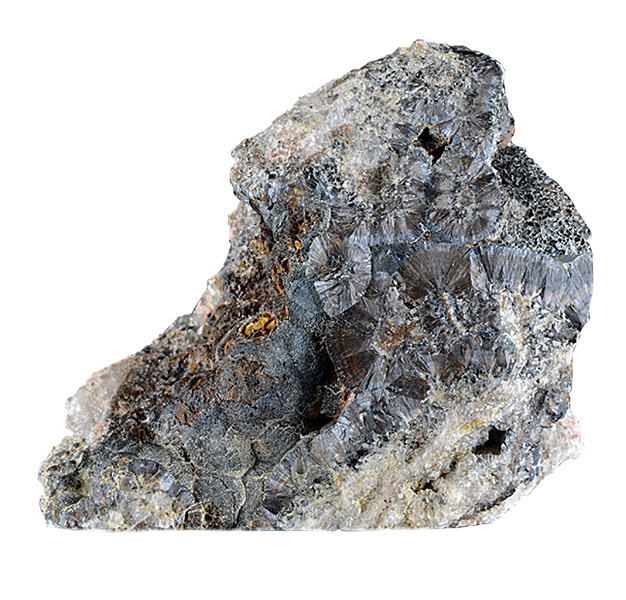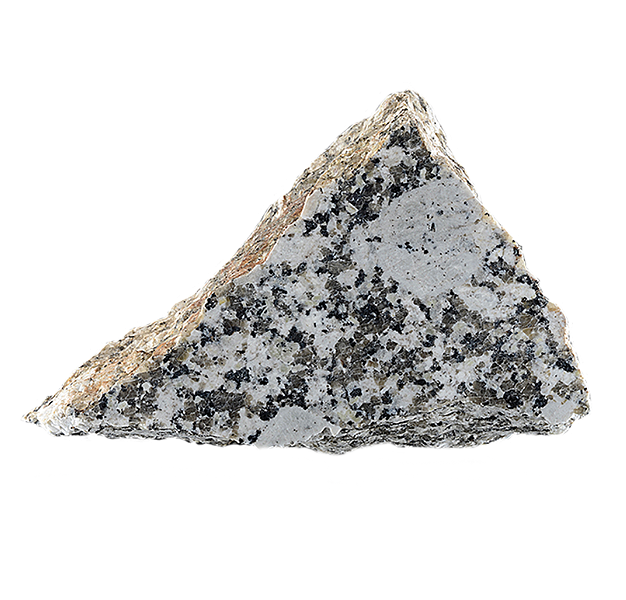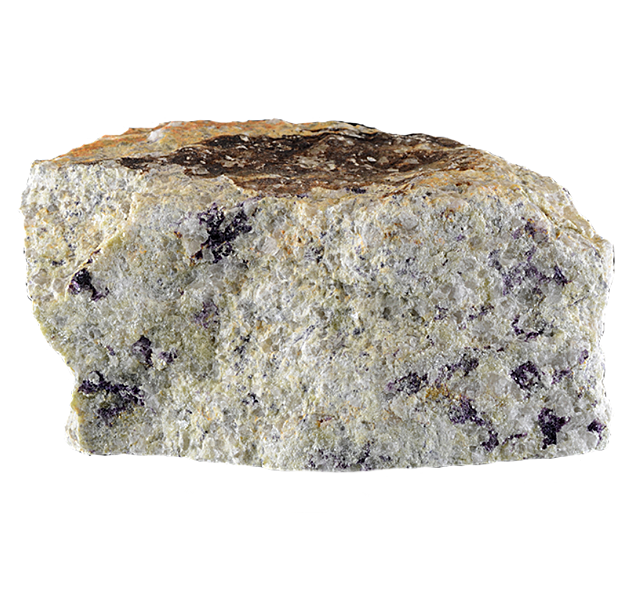
Fact sheet
This lithium-enriched granite has been subjected to at least two major hydrothermal events. The first caused considerable alteration to the feldspars, to the extent that it is not always possible to discriminate between plagioclase and orthoclase. This was the first step to the creation of a china clay deposit as the rotted feldspar was replaced by secondary muscovite and later kaolinite.
The second alteration process involved fluorine-rich fluids which arrived in small veinlets and pervasively attacked the entire rock. Lithium mica was replaced along cleavages by fluorite and voids in feldspar were infilled with larger crystals of colour-zoned purple-white fluorite. Topaz (another fluorine-bearing species) is also present in this rock.
Rotation 2 shows opaque blades of columbite-tantalite - a species only usually found in extremely evolved granite and pegmatites. It's a mineral that cannot be positively identified with a transmitted light microscope, although its form is typical of the species. Electron microprobe analysis, however, confirms the species.
Further evidence of hydrothermal activity in this sample is shown in rotation 3, where a large quartz crystal is seen to contain many trains of tiny inclusions. These are fluid inclusions - trapped water and gases (such as carbon dioxide) sealed into the quartz as it crystallised.
A case study of the St Austell granite complex in Cornwall, England, illustrating the range of rocks associated with a granite intrusion. The earliest part of the complex is a siderophyllite (biotite) granite containing muscovite and tourmaline typical of a SW England granite, with many primary magmatic features.
This early intrusion was followed by the intrusion of an evolved volatile-rich magma which was the driving force behind a series of intense hydrothermal processes as volatiles escaped from this magma and helped to establish an extensive alteration halo (aureole). Boron, fluorine and lithium (as well as water) played major roles in the formation of the second intrusion and in the associated hydrothermal processes. Igneous activity lasted around 18 million years from 282 Ma (siderophyllite granite) to 265 Ma (fluorite granite).
